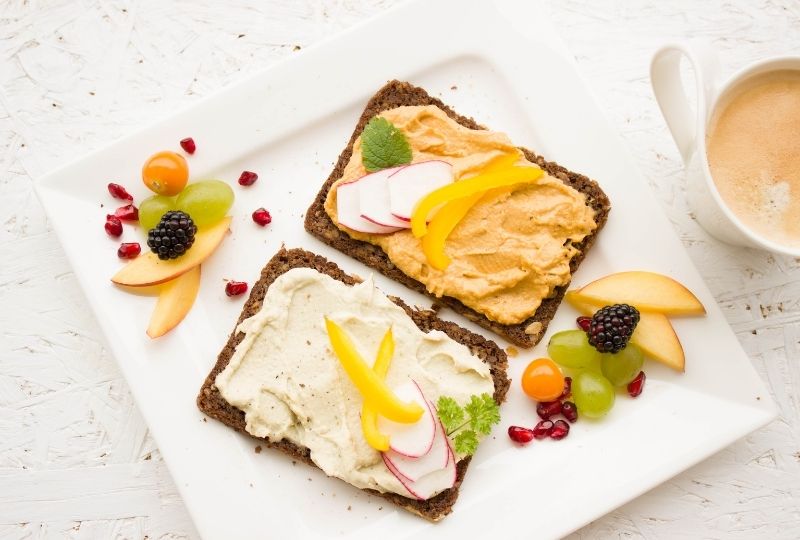Life can be hectic, and finding time to eat healthy may seem challenging. With work, family, and daily responsibilities, it’s easy to grab fast food or skip meals. However, a busy lifestyle doesn’t mean you have to sacrifice good nutrition.
With simple strategies and smart planning, you can maintain a balanced diet even on your busiest days.
In this guide, you’ll learn practical ways to eat healthy, save time, and stay energized.
Why a Healthy Diet Matters, Even When You’re Busy
✅ Boosts energy and mental clarity → Helps you stay productive throughout the day.
✅ Prevents unhealthy cravings → Keeps blood sugar levels stable.
✅ Supports overall well-being → Strengthens the immune system and improves digestion.
✅ Reduces stress and fatigue → Nourishes the body with essential nutrients.
Now, let’s explore how to make healthy eating work for your lifestyle.
10 Simple Ways to Eat Healthy on a Busy Schedule
1. Plan Your Meals in Advance
A little planning saves time and prevents unhealthy choices.
✅ How to Meal Plan Efficiently:
- Set aside 10–15 minutes each week to plan meals.
- Make a grocery list with healthy ingredients.
- Prepare simple, balanced meals with lean proteins, whole grains, and vegetables.
✅ Why It Works: Avoids last-minute unhealthy food choices.
2. Meal Prep for the Week
Batch-cooking meals reduces stress and saves time during busy days.
✅ Meal Prep Ideas:
- Cook a big batch of grains (quinoa, brown rice) for the week.
- Pre-cut vegetables and store them for easy use.
- Prepare and freeze healthy snacks or smoothies for quick access.
✅ Why It Works: Ensures you always have healthy options available.
3. Keep Healthy Snacks on Hand
When you’re busy, having nutritious snacks prevents reaching for junk food.
✅ Best Grab-and-Go Snacks:
- Nuts and seeds (almonds, walnuts, pumpkin seeds).
- Greek yogurt with fruit.
- Hummus with veggie sticks.
- Boiled eggs or protein bars.
✅ Why It Works: Keeps energy levels stable and reduces cravings.
4. Choose Smart Fast-Food Options
If eating out, make mindful choices instead of going for highly processed meals.
✅ Healthier Takeout Choices:
- Grilled chicken or fish instead of fried options.
- Salads with lean protein and light dressing.
- Brown rice or whole grains instead of refined carbs.
✅ Why It Works: Helps avoid excessive calories, sugar, and unhealthy fats.
5. Stay Hydrated
Dehydration can cause fatigue, headaches, and cravings.
✅ Hydration Tips:
- Carry a refillable water bottle throughout the day.
- Drink herbal teas or infused water instead of sugary drinks.
- Set reminders to drink water every hour.
✅ Why It Works: Keeps your body and brain functioning at their best.
6. Cook Once, Eat Twice
Make double portions of meals so you have leftovers for the next day.
✅ Time-Saving Meal Ideas:
- Prepare extra roasted vegetables for tomorrow’s salad.
- Cook extra chicken or tofu for sandwiches or wraps.
- Make a big batch of soup and freeze portions for later.
✅ Why It Works: Reduces cooking time and ensures healthy meals all week.
7. Use a Slow Cooker or Instant Pot
These kitchen tools save time while making healthy meals effortlessly.
✅ Easy Slow Cooker Meal Ideas:
- Chili with beans and lean meat.
- Vegetable and lentil soup.
- Shredded chicken for tacos or salads.
✅ Why It Works: Lets you cook nutritious meals with minimal effort.
8. Eat Mindfully, Even When in a Hurry
Rushed eating leads to overeating and poor digestion.
✅ Mindful Eating Tips:
- Avoid eating in front of screens.
- Chew slowly and savor each bite.
- Pay attention to hunger and fullness signals.
✅ Why It Works: Prevents overeating and helps with digestion.
9. Stock Your Kitchen with Healthy Staples
Having healthy ingredients at home makes meal prep easier.
✅ Essential Healthy Pantry Items:
- Whole grains (quinoa, brown rice, oats).
- Canned beans and lentils for quick protein.
- Frozen fruits and vegetables for smoothies and meals.
- Nuts, seeds, and healthy oils (olive, avocado oil).
✅ Why It Works: Reduces the need for processed and unhealthy foods.
10. Set Realistic Goals and Be Flexible
You don’t have to be perfect—focus on progress, not perfection.
✅ How to Stay on Track:
- Aim for 80% healthy meals, 20% flexibility.
- Choose healthier versions of your favorite foods.
- Allow yourself treats in moderation without guilt.
✅ Why It Works: Makes healthy eating sustainable long-term.
Final Thoughts
Even with a busy schedule, eating healthy is possible with small, intentional choices. By planning ahead, keeping nutritious options on hand, and making simple swaps, you can stay energized, focused, and feeling your best.
What’s one healthy eating habit you’ll try this week? 😊
